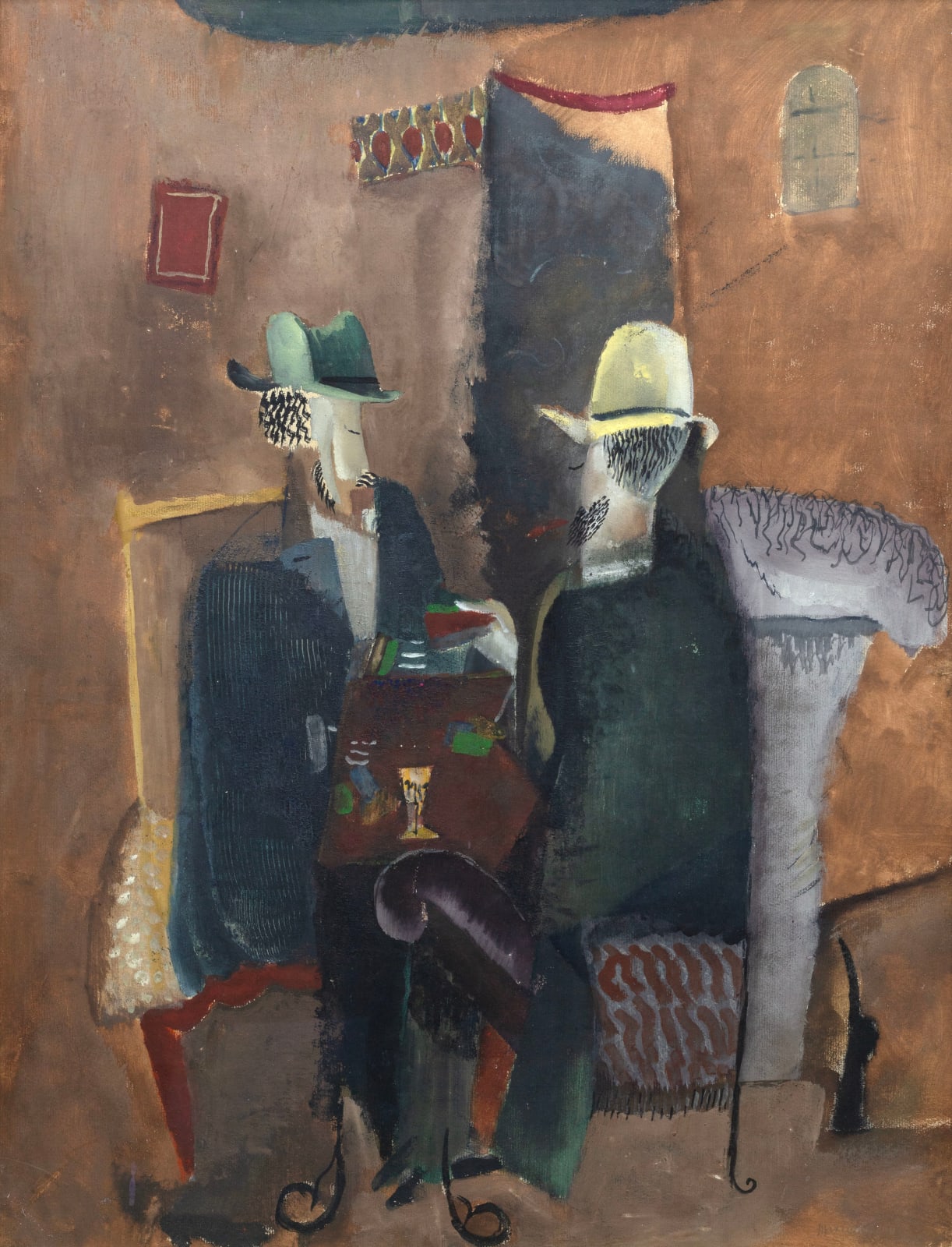Max Weber American, 1881-1961
The Card Players, 1917
Oil and gouache on board
24½ x 18½ inches
62.2 x 47 cm
62.2 x 47 cm
Signed and dated at lower right: Max Weber 1917
Schoelkopf Gallery is the exclusive worldwide representative of the Max Weber Foundation. Max Weber's brief time studying in Paris from 1905-08 marked a turning point in his artistic career. While...
Schoelkopf Gallery is the exclusive worldwide representative of the Max Weber Foundation.
Max Weber's brief time studying in Paris from 1905-08 marked a turning point in his artistic career. While in Paris, Weber encountered and was deeply influenced by Paul Cézanne. The Card Players, 1917, is likely an homage to Paul Cézanne's The Card Players series, painted in the early 1890s. A pivotal episode in the transition from Impressionism to Modernism, the paintings were significant for depicting simple, everyday scenes of peasants playing cards. The careful compositions, use of color, and simplified forms reflected Cézanne's focus on the underlying structures of his subjects and laid the groundwork for modern art movements that followed, notably in Weber's case, for Cubism. The present painting, with its fragmented geometric shapes, multiple perspectives, muted color palette, and textural, collage-like paint application, epitomizes the Cubist experiments that dominated Weber's artistic output in the decade following his return to New York.
Max Weber's brief time studying in Paris from 1905-08 marked a turning point in his artistic career. While in Paris, Weber encountered and was deeply influenced by Paul Cézanne. The Card Players, 1917, is likely an homage to Paul Cézanne's The Card Players series, painted in the early 1890s. A pivotal episode in the transition from Impressionism to Modernism, the paintings were significant for depicting simple, everyday scenes of peasants playing cards. The careful compositions, use of color, and simplified forms reflected Cézanne's focus on the underlying structures of his subjects and laid the groundwork for modern art movements that followed, notably in Weber's case, for Cubism. The present painting, with its fragmented geometric shapes, multiple perspectives, muted color palette, and textural, collage-like paint application, epitomizes the Cubist experiments that dominated Weber's artistic output in the decade following his return to New York.
Provenance
The artist; to[Downtown Gallery, New York];
Private collection
Exhibitions
San Francisco Museum of Art, California, History of American Watercolors, as 1919David Winton Bell Gallery, Brown University, Providence, Rhode Island, Over Here: Modernism, The First Exile, 1914–1919, April 15–May 29, 1989, no. 71

